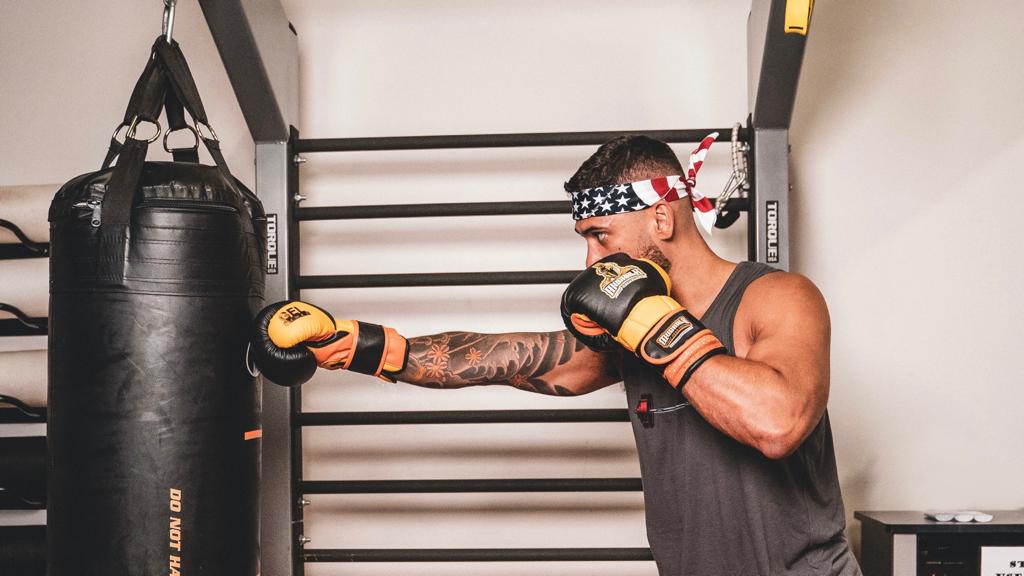
How to choose a punching bag
A punching bag is an essential piece of equipment for any boxer, martial artist, or fitness enthusiast. It is a great tool for building strength, endurance, and improving your technique. However, with so many different types of punching bags available, it can be challenging to choose the right one for your needs. In this article, we will provide you with 10 tips on how to choose a punching bag that suits your specific requirements.

Determine the Type of Punching Bag You Need
Before you start shopping for a punching bag, it’s crucial to understand the different types of bags available in the market. The three primary types of punching bags are heavy bags, speed bags, and double-end bags. A heavy bag is the most common type of punching bag used for boxing, martial arts, and fitness training. They come in various sizes, ranging from 60 to 100 pounds, and can be hung from a ceiling or attached to a stand.
Speed bags are smaller, lighter bags that are used for improving hand-eye coordination, speed, and reflexes. They are typically attached to a platform and are much more difficult to hit than heavy bags. Double-end bags are smaller, more mobile bags that are attached to the floor and the ceiling with an elastic cord. They are designed to improve accuracy and timing, making them ideal for boxing and martial arts training.
Consider the Weight and Size of the Bag
The weight and size of the bag are essential factors to consider when selecting a punching bag. If you’re a beginner, it’s best to start with a lighter bag, weighing around 60 to 70 pounds. As you progress, you can move up to a heavier bag, around 80 to 100 pounds.
When it comes to the size of the bag, it’s essential to choose one that matches your height and weight. For example, if you’re tall and heavy, you’ll need a longer and wider bag to accommodate your size.
Choose the Right Material
Punching bags are made from various materials, including vinyl, canvas, and leather. Each material has its advantages and disadvantages. Vinyl bags are the cheapest, but they tend to wear out quickly. Canvas bags are durable and absorbent but can be challenging to clean. Leather bags are the most expensive but are also the most durable and offer the best resistance.
Determine the Filling Material
The filling material is another critical factor to consider when choosing a punching bag. Bags can be filled with a variety of materials, including sand, water, foam, and air. Sand-filled bags are the most durable and provide the best resistance, but they can also be the heaviest. Water-filled bags are more comfortable to hit but can be challenging to maintain. Foam-filled bags are the lightest but offer the least resistance.
Decide on the Shape of the Bag
The shape of the bag will depend on the type of training you intend to do. If you’re primarily interested in boxing, a traditional cylindrical bag is best. If you’re more interested in martial arts, a bag with a tapered bottom and top is better suited for practicing kicks and knee strikes.
Determine the Hanging Method
Punching bags can be hung from a variety of locations, including a ceiling, a wall, or a stand. Ceiling-mounted bags are the most common but require a strong ceiling and appropriate mounting hardware. Wall-mounted bags are great for small spaces, but they may not provide enough clearance for certain types of training. Stand-mounted bags are the most versatile but can be expensive.
Check for Additional Features
Some punching bags come with additional features such as adjustable heights, reinforced stitching, or target training needs and choose a bag that has them.
Adjustable height bags are great for users of different heights or for practicing different types of strikes. Reinforced stitching ensures the bag’s durability, which is essential for frequent users. Bags with target zones are ideal for improving accuracy and practicing specific types of strikes.
Consider the Cost
The cost of a punching bag can vary widely, depending on the material, size, and brand. It’s essential to set a budget before you start shopping and stick to it. Keep in mind that more expensive bags tend to be more durable and offer better resistance, so it may be worth investing in a higher quality bag if you plan on using it frequently.
Read Reviews and Ask for Recommendations
Before making a purchase, read online reviews to see what other customers have to say about the product. Look for feedback on the bag’s durability, resistance, and overall quality. Additionally, ask for recommendations from trainers, coaches, or other experienced users.
Test the Bag Before Buying
If possible, try out a punching bag before you buy it. This will give you a better idea of the bag’s weight, resistance, and overall feel. Some fitness centers or sporting goods stores may have bags available for testing.
Consider the Space Available
Finally, consider the space you have available for your punching bag. Heavy bags can take up a lot of room, so make sure you have enough space to accommodate the bag and enough clearance to perform the type of training you intend to do.
Conclusion:
Choosing the right punching bag is essential for improving your strength, technique, and overall fitness level. Consider the type, weight, size, material, filling, shape, hanging method, additional features, cost, reviews, and available space when making your decision. By following these tips, you can find a punching bag that suits your specific needs and helps you achieve your training goals.
For more tips, check out the following article: How to choose an infrared panel












